Alexander McQueen: A Midnight Dialogue Between Darkness and Desire
Under the arched glass ceiling of the Jardin des Plantes, a mirrored portal jutted out from a wooden staircase—an invitation to step into Sean McGirr’s otherworldly London. It wasn’t the romanticized London of polished gentlemen and prim tea rooms, but something moodier, more cinematic. The kind of London that only exists after midnight, when the fog settles low and the city whispers its secrets.

For his third runway collection at Alexander McQueen, McGirr looked to Charles Dickens’s Night Walks for inspiration—a book about insomnia, wanderers, and the allure of darkness. “It’s about the kind of person who roams alone, but with complete conviction,” he said. “That’s the McQueen spirit to me—knowing who you are, even in the dark.”
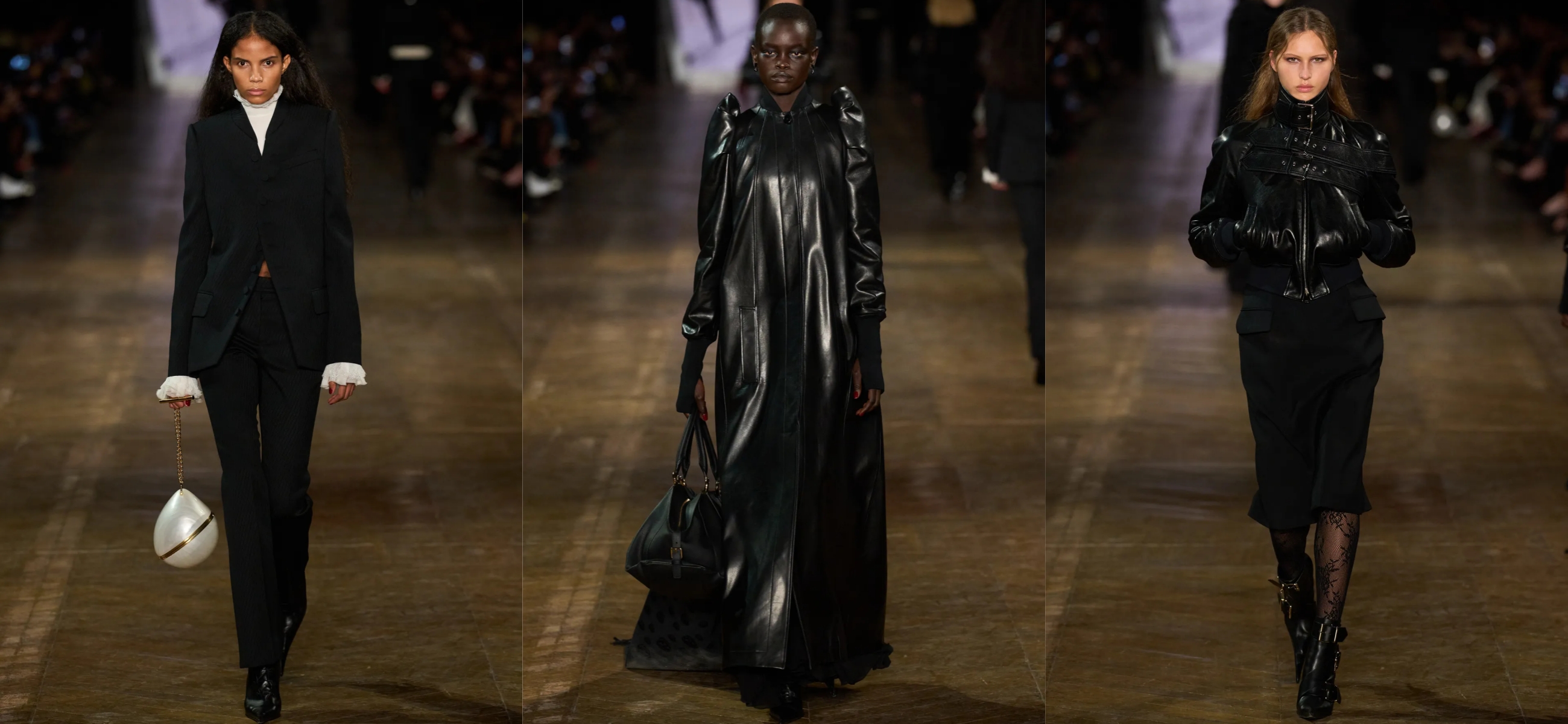
And that sense of self-assured mystery set the tone for the entire collection. The first look emerged from the reflective portal like a vision: a towering silhouette in razor-sharp tailoring, a coat with gothic peak shoulders, and a lace ruff kissing the jawline. A spontaneous cheer erupted from the audience. McGirr’s McQueen has always been about power—but this season, he injected it with a touch of poetic mania.
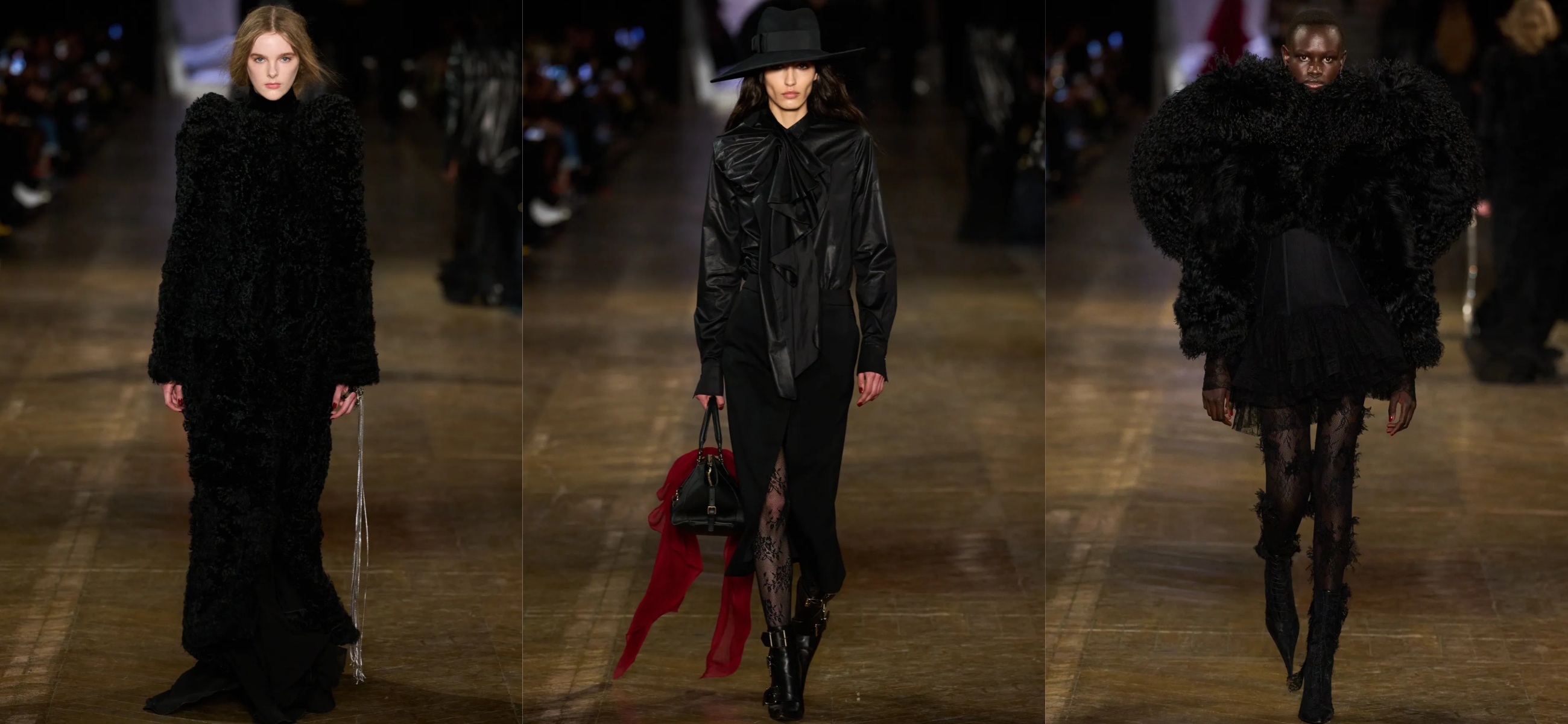
The tailoring was sculptural and severe, true to the brand’s roots. High armholes and corseted waists defined coats that looked as if they’d been drawn in ink. Some suits were slashed open at the back to reveal flashes of satin or lace—a subtle rebellion against their Victorian discipline. And then came the flaneurs: dreamers wrapped in long, ruffled silk dresses, the kind of garments that might catch the gaslight on a deserted London street. Their color palette—wine-stained burgundy, twilight indigo, tarnished gold—was borrowed from the 1973 film adaptation of The Picture of Dorian Gray.
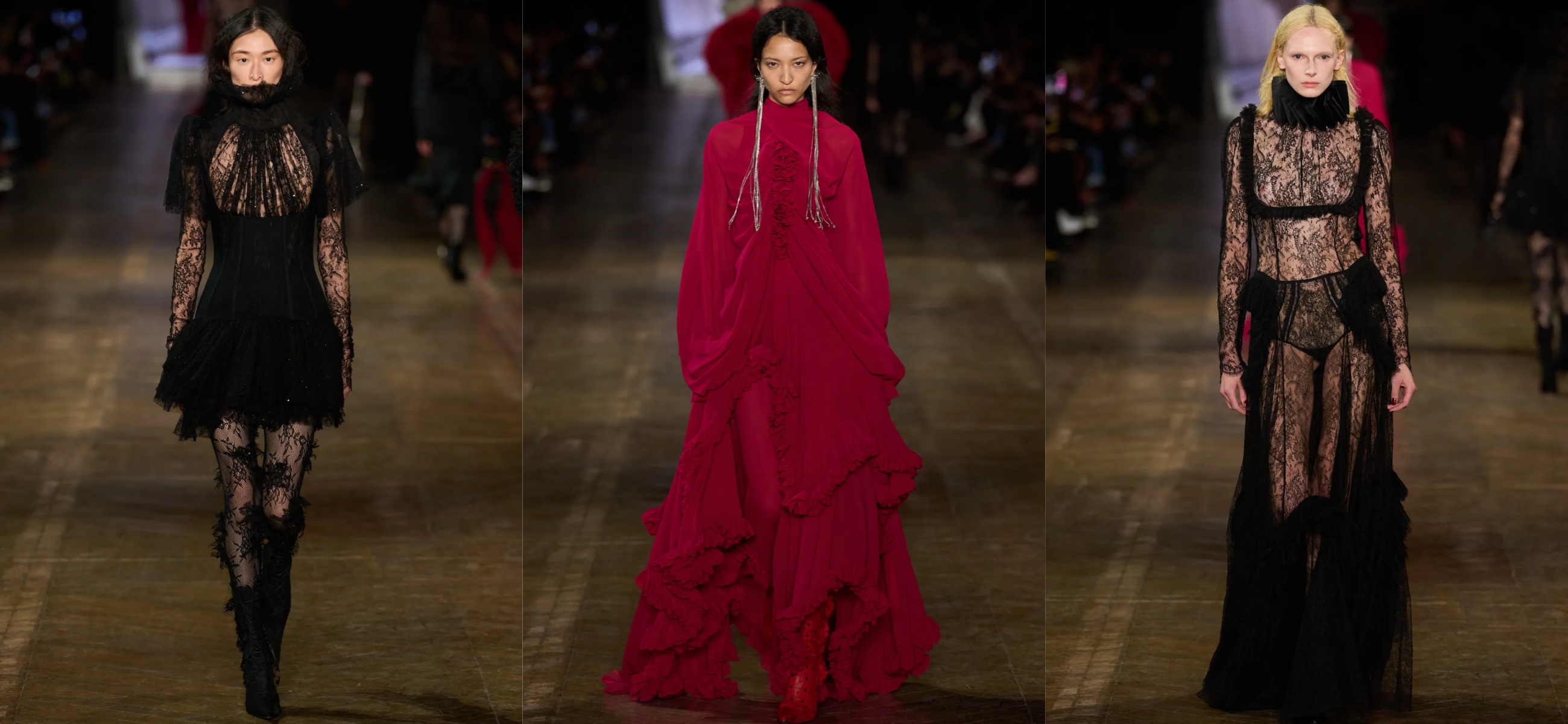
Philip Treacy’s sculptural hats, kinked and bent just so, gave a wink to Wildean flamboyance. McGirr, like Wilde, isn’t afraid to flirt with contradiction—masculine precision paired with fragile romance, decadence layered over grit. Even the leather pieces felt dual-natured: a bomber jacket embroidered with gold bullion detailing typically reserved for royal regalia, now reimagined for the restless wanderer.
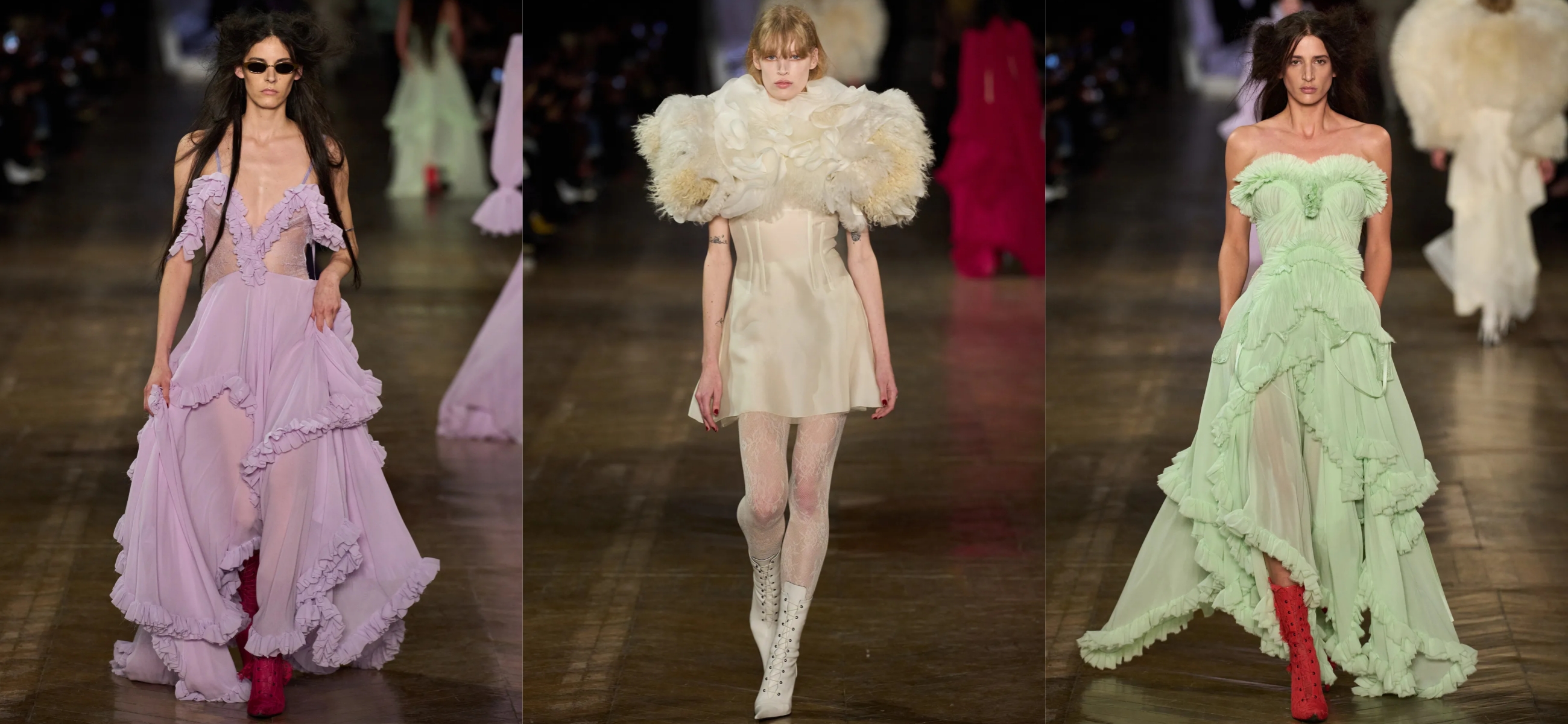
As the show progressed, McGirr loosened his grip on the city’s corseted formality. A cropped shearling jacket appeared, its panels pieced together to resemble angel’s wings—fluttering slightly with each step, equal parts armor and vulnerability. It was followed by a sculpted cape that gleamed like obsidian in the light, catching the breath of the crowd as it passed.
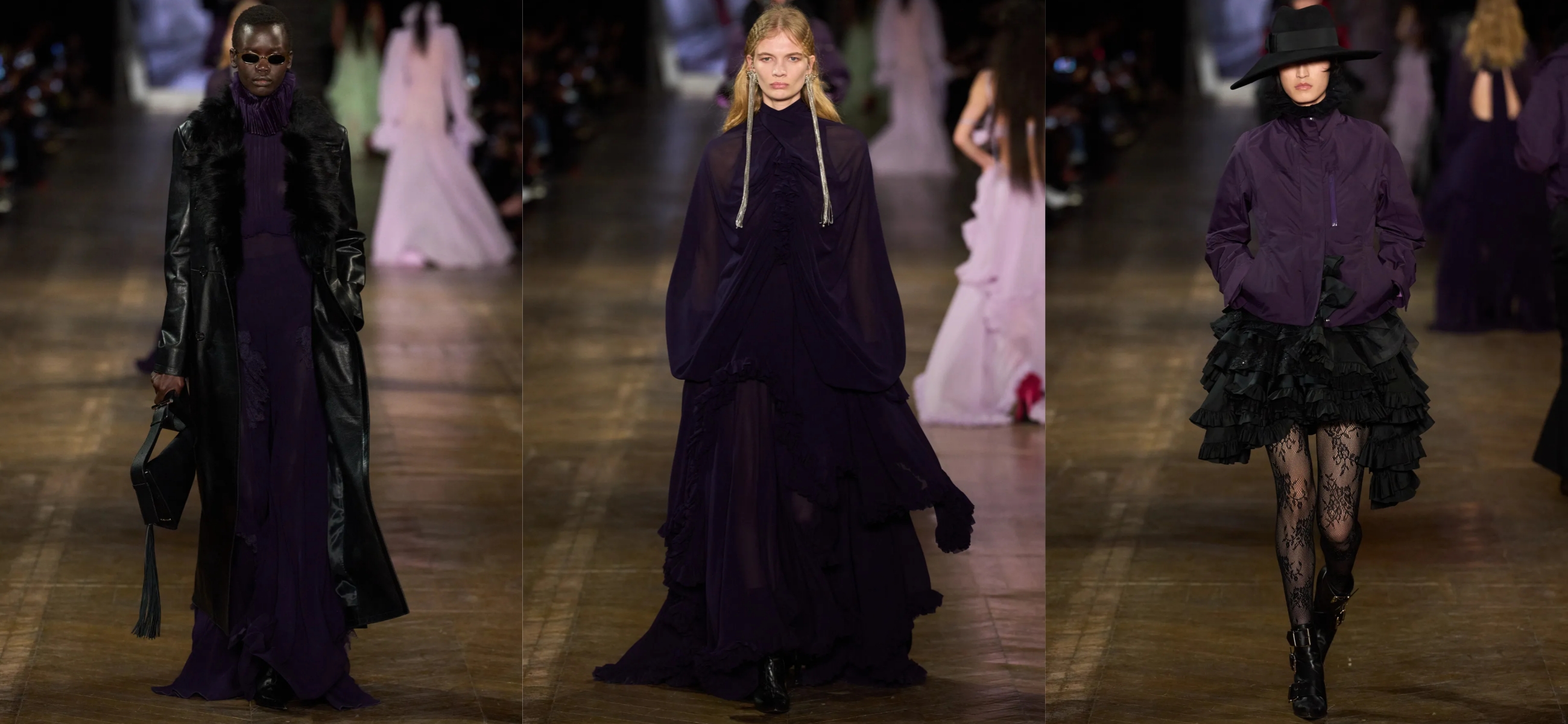
Despite the collection’s gothic undertone, there was an undercurrent of liberation. These weren’t clothes for ghosts or saints, but for people who dare to lose and find themselves in the night. McGirr’s McQueen woman (and man) doesn’t seek approval; they simply exist—burning quietly in the dark.

The finale was a haunting tableau: a model standing motionless beneath the mirrored portal, her reflection fractured, multiplied, and distorted—echoing Dorian Gray’s obsession with identity and decay. “I am tired of myself tonight. I should like to be somebody else,” Wilde once wrote. McGirr’s answer to that? You can be. But you’ll do it in a perfectly cut McQueen coat.
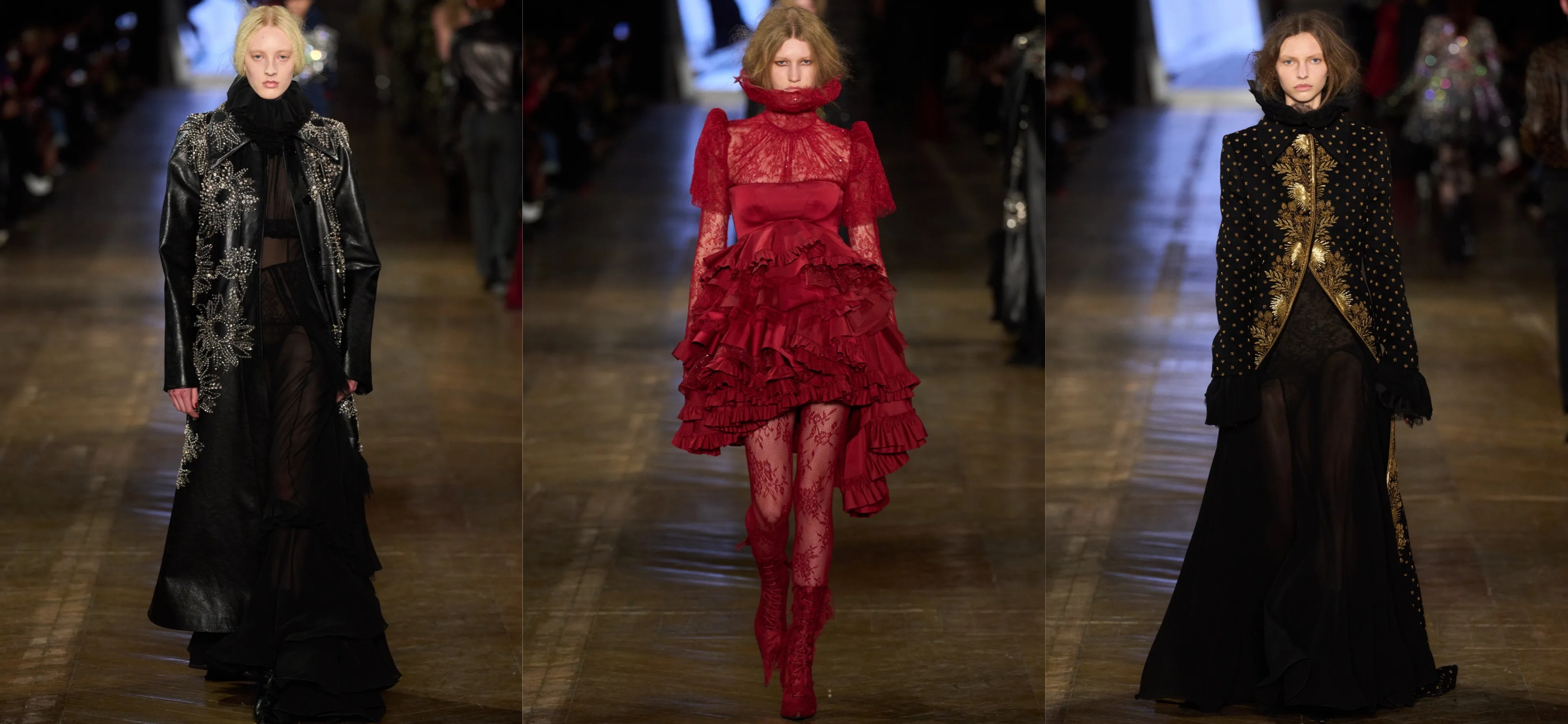
In only three seasons, Sean McGirr has managed to reclaim Alexander McQueen’s raw soul while pushing it into new psychological territory. His Fall/Winter 2025 collection wasn’t just fashion—it was a nocturnal confession. A dialogue between darkness and desire, between who we are and who we might dare to become once the city sleeps.